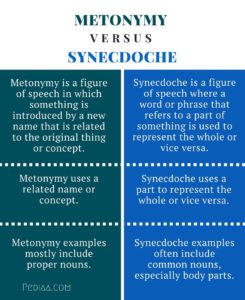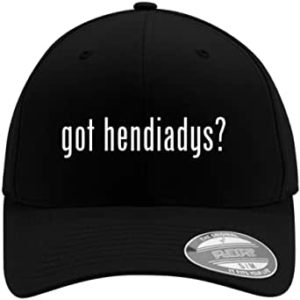Aug
22
Three O.T. Figures of Speech
Just a short lesson this week on recognizing three types of figure of speech found in the Old Testament.

Now, there are various types of figures of speech — idioms, euphemisms, anthropomorphisms, merisms, hyperbole, simple metaphors, etc. During my recent read-through of the Bible in the NET translation, I noticed (thanks to the footnotes) that the following particular types were showing up relatively often in Psalms and the Wisdom books (Job, Proverbs, Ecclesiastes), though they do occur elsewhere. So, I figured a brief post might be of interest to some readers.
In your own Bible reading, you might have wondered about how to properly understand a few of these occurrences. Or, you might have been familiar with how one or more of these figures worked but didn’t know there was a special term for it. Or… In any case, I’ll give a definition and examples for each. (If you’re so inclined, you might want to look up the verses on BibleGateway.com, since you can access up to 5 translations side-by-side.)
Metonymy: This is when a word or phrase is substituted for an attribute or other term closely associated with the first.
One common example of this in the Bible is when the Hebrew writer uses ‘arm’ or ‘right hand’ to mean ‘strength or power’ (e.g., Ps. 17:18; 60:5). Another is when ‘name’ is used for the ‘reputation and revealed character’ (of God) (e.g., Ps. 76:1; 79:9). A third is when the Hebrew for ‘mouth’, ‘tongue’, and ‘palate’ are used as metonymies of cause for the effect (words) it produces (e.g., Job 5:15; 16:5; Prov 5:3; 12:18).
A few more of this sort of metonymy are found in Job 37:13 (Heb ‘for a rod’ is a metonymy of cause (rod) for the effect is produces (punishment)); Prov 2:5 (the Hebrew term translated “knowledge” here means more than merely cognition and is often used as a metonymy of cause (knowledge) for effect (obedience)); Ecc 2:14 (Heb ‘has his eyes in his head’ is a metonymy of cause (eyes) for effect (sight)); Ecc 5:3 (the Hebrew term for “business, task, or occupation” is used here as a metonymy of cause (“many tasks”) for effect (many cares)).

Interestingly, in addition to metonymies of cause for effect, there are metonymies that go the other way (effect for cause), too. For example, Ps. 64:1 (Heb ‘from the terror of [the] enemy’ is a metonymy of effect (terror) for cause (the enemy’s…attacks)); Prov 23:21 (Heb ‘drowsiness’ is a metonymy of effect for the drunkenness and gluttony that causes it); Prov 28:17 (Heb ‘the blood of a life’ is a metonymy of effect (blood) for cause (murder)).
Here are a few others I found interesting:
Ps. 69:9 — God’s house or temple is used as a metonymy for God Himself
Ps. 123:1 — Heb ‘sitting’ is a metonymy for being enthroned
Prov 6:32 — Heb ‘lacks heart’ is here a metonymy for discernment, wisdom, good sense
Prov 19:23 — Heb ‘life’ is a metonymy of subject for ‘blessings and prosperity in life’
Prov 20:29 — Heb ‘gray hair’ is a metonymy for all that is valuable about old age (dignity, wisdom, honor, experience)
Synecdoche: As per Merriam-Webster, this is when “a part is put for the whole (such as fifty sail for fifty ships), the whole for a part (such as society for high society), the species for the genus (such as cutthroat for assassin), the genus for the species (such as a creature for a man), or the name of the material for the thing made (such as boards for stage).”
In Proverbs 3:8, we have a rare instance of a double synecdoche, separated by a metonymy. Compare the NET and ESV:
NET: “This will bring healing to your body, and refreshment to your inner self.”
ESV: “It will be healing to your flesh and refreshment to your bones.”
In the first half, the Hebrew for ‘navel’ is a part that is used to represent a whole (entire body). Then we see a metonymy of cause (drink) translated in both cases as the effect (refreshment). In the second synecdoche, a part (your bones) is used to represent the whole (the inner person, both physical and moral). Note that the ESV translated the part literally, while the NET went with the whole.

Proverbs 30:4 is an example where either a metonymy or a synecdoche might be intended. At the end of the fourth question, the Hebrew refers to ‘the ends of the earth’. This could refer to the people who live at ‘the ends of the earth’ (metonymy) or to God’s creation of the whole world, including the most distant places (a synecdoche).
Ecclesiastes 4:8 has a two (or is it three?) synecdoches. The Hebrew ‘son nor brother’ is used, where both ‘son’ and ‘brother’ are examples of synecdoche of specific (species) for the general (genus). ‘Son’ is put for offspring and ‘brother’ for siblings. Then, the Hebrew for ‘his eye’ is used to refer to a part that represents the whole person.
Hendiadys: The expression of an idea by the use of usually two independent words connected by “and” instead of the usual combination of independent word and its modifier. Common examples are “nice and warm”, “rough and tough”, “bread and butter”.
These are fairly straightforward, so I’ll just list examples:
Ps. 46:1 — Heb ‘our refuge and strength” means our strong refuge
Prov 5:14 — Heb ‘congregation and assembly’ means the entire assembly
Prov 11:31 — Heb ‘the wicked and the sinner’ means all sinners (who are, by definition, wicked)
Prov 13:5 — Heb ‘acts shamefully and disgracefully’
Ecc 12:9 — Heb ‘he weighed and studied’
(H/T NET translation, which footnotes were occasionally partially quoted above. I should really pick up a copy of Figures of Speech by E.W. Bullinger….)















